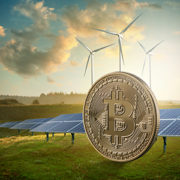Archive | Industry and trade RSS feed for this section
Gender, Industry and trade
 Economics, Environment, Industry and trade
Economics, Environment, Industry and trade
 Environment, Finance sector development, Industry and trade
Environment, Finance sector development, Industry and trade
 Industry and trade
Industry and trade
 Environment, Finance sector development, Industry and trade
Environment, Finance sector development, Industry and trade
 Industry and trade, Urban development
Industry and trade, Urban development
 Economics, Industry and trade
Economics, Industry and trade
 Industry and trade
Industry and trade
 Economics, Finance sector development, Industry and trade
Economics, Finance sector development, Industry and trade
 Economics, Governance and public sector management, Industry and trade, Regional cooperation and integration
Economics, Governance and public sector management, Industry and trade, Regional cooperation and integration

Is female entrepreneurship a coping strategy during crises?

The recent global economic crisis, with its peak in 2008, resulted in a decline in global gross domestic product. It led to unstable financial markets and a lag in private sector demand (World Bank 2010). Its consequences, especially for the labor market, have been most unfortunate. In many countries, workers lost their jobs, wage earnings declined, and work hours shortened (World Bank 2011).
How does trade openness affect the environmental Kuznets curve?

The People’s Republic of China (PRC) has reformed and opened up its economy for 4 decades. However, accompanying the country’s fast-growing gross domestic product (GDP) and trade sector, environmental degradation, such as deteriorating water quality, land deforestation, pollution, and frequent haze plagues, has attracted a great deal of attention.
Green finance for sustainable investment

To place the Asian economies onto a sustainable development pathway requires an unprecedented shift in investment away from industries relying intensively on greenhouse gases, fossil fuels, and natural resources toward more resource-efficient technologies and business models. The finance sector will have to play a central role in this green transformation. Important aspects of green finance are sustainable investment and banking, where investment and lending decisions are taken based on environmental screening and risk assessment to meet sustainability standards, as well as insurance services that cover environmental and climate risk.
Trust-by-Design Investment: A novel Blockchain-based approach to ease green energy investments

To meet obligations under the Paris Agreement, major investments in renewable energy production and infrastructure are necessary. However, as public budgets are tight and because of Basel capital requirements, major public investments are unlikely to provide sufficient liquidity. Since most renewable energy projects are considered risky, many financiers are reluctant to lend to them or they lend at high interest rates. This lack of financing has to be overcome.
Sustainable funding schemes for the development of waste management projects in Asia

For many years, cities have been the engines of economic growth in Asia. However, this growth has brought the immense challenge of the daily generation of millions of tons of solid waste, especially in mega cities. The amount of solid waste being generated in Asia is drastically increasing as 44 million people are being added to city populations every year, and many cities are placing burdens on municipal as well as central governments. By 2050, 50% of the world’s population will live in the Asia and Pacific region (ADB, 2011).
High-speed rail investment: A butterfly effect for urban chaos

In 1969, Professor Edward Norton Lorenz coined the term “butterfly effect” to state that subtle changes in conditions can influence or cause seemingly unrelated results elsewhere. The flutter of a butterfly’s wings at place A can eventually develop into a hurricane at place B even though A and B are not related. Almost two decades after the term was coined, Japan National Railways (JNR) was privatized and split into several corporations, and now JR East manages the largest network of railway lines in Japan.
Volatility linkages between energy and food prices

Energy, especially from oil and its derivatives, is a key factor of production in an economy and is widely used in different sectors—including transportation, agriculture, and industry—in households, and as a raw material in the production of petrochemical products. As such, energy has great value and affects other commodity prices. Since the first oil price shock of 1973, examining the effects of changes in energy prices, especially of oil, on macro and microeconomic levels has become one of the most fundamental issues of energy economics (Taghizadeh-Hesary et al. 2013).
Dismissal laws, innovation, and economic growth

The appropriate degree of government intervention in private contractual relationships, particularly in employment law, remains a fraught public policy issue. In arguing the detrimental effects of laws that prevent employers from terminating labor contracts with employees, flexible labor market conditions in the United States (US)—exemplified by the common-law “employment-at-will” doctrine—are often contrasted with the rigidities engendered by employment protection provisions in several European countries.
Young Small and Medium-Sized Enterprises and Bank Credit Denials: Evidence from Europe

It is widely accepted that small and medium-sized enterprises (SMEs) represent the backbone of most economies. Not surprisingly, the story is mostly the same across the globe. For instance, Yoshino and Taghizadeh-Hesary (2014) report that SMEs account for almost 98% of all enterprises in Asia, offering jobs to around 66% of the workforce. In the European Union, the data offer a similar picture. In fact, SMEs represent 99% of all non-financial enterprises and account, on average, for 67% of total employment (European Commission 2017). Overall, such figures undoubtedly highlight how pivotal SMEs are for the functioning of the real economy.
Impact of Retaliatory Trade Enforcement Actions on the World Trade Organization and Trade Governance

The international regulatory instruments in international trade boast a remarkable story of evolving sophistication. Their transformation from voluntary export restraint agreements showed that the world trade system was poised to keep pace with rapidly expanding trade ties and diversifying supply chains. To keep the reins on an increasingly dynamic global trade system, the General Agreement on Tariffs and Trade (GATT) sought to formalize instruments that would help keep trade balanced and fair by isolating international trade from government intervention, in alignment with the economic thinking of the period: neoliberal convergence.


Search
Subscribe / Connect to Asia Pathways
Subjects
- Agriculture and natural resources
- Blog
- Capacity development
- Climate change
- Economics
- Education
- Energy
- Environment
- Finance sector development
- Gender
- Governance and public sector management
- Health
- Industry and trade
- Information and Communications Technology
- Infrastructure
- Miscellaneous
- Population
- Poverty
- Private sector development
- Regional cooperation and integration
- Sanitation
- Social development and protection
- Transport
- Uncategorized
- Urban development
- Video Blog
- Water
Recent Posts
- Navigating Linear Transport Infrastructure Through Conservation Landscapes
- How Are Technology Trends Shaping the Future of Insurance?
- Securing Asia’s Future Through Soil Health: Why It Matters and What Must Be Done
- Silent Struggles: Advancing Women’s Mobility with Public Transportation in Asia
- Mind Your Neighbors: Measuring Shrimp Farm Spillovers




Recent Comments